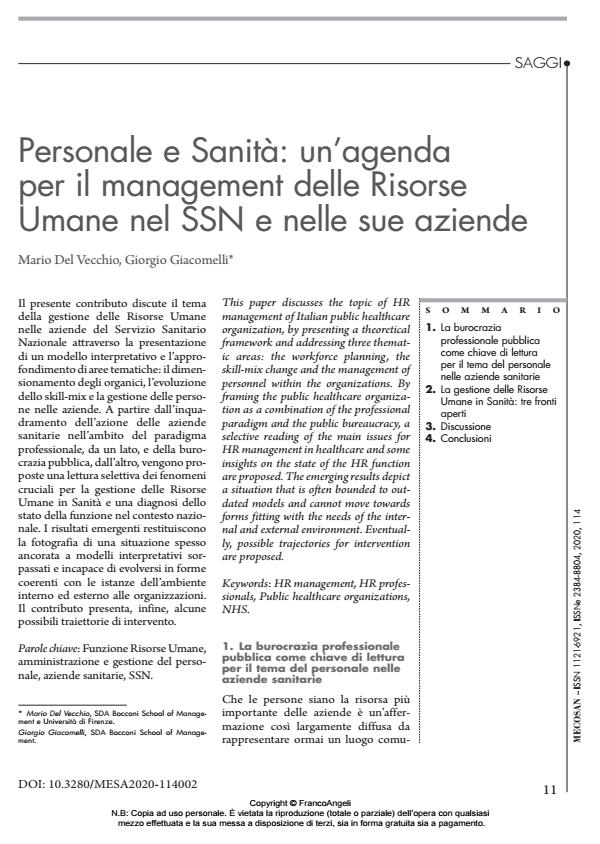Personale e Sanità: un’agenda per il management delle Risorse Umane nel SSN e nelle sue aziende
Journal title MECOSAN
Author/s Mario Del Vecchio, Giorgio Giacomelli
Publishing Year 2020 Issue 2020/114
Language Italian Pages 21 P. 11-31 File size 272 KB
DOI 10.3280/MESA2020-114002
DOI is like a bar code for intellectual property: to have more infomation
click here
Below, you can see the article first page
If you want to buy this article in PDF format, you can do it, following the instructions to buy download credits

FrancoAngeli is member of Publishers International Linking Association, Inc (PILA), a not-for-profit association which run the CrossRef service enabling links to and from online scholarly content.
- La programmazione del personale sanitario in ambito territoriale: una revisione sistematica della letteratura e analisi del contesto italiano in base al PNRR e DM77/2022 Lorena Martini, Luigi Apuzzo, Daniele Pandolfi, Irene Gabutti, Domenico Mantoan, in MECOSAN 124/2023 pp.7
DOI: 10.3280/mesa2022-124oa15988 - Metodologie per la determinazione del fabbisogno di personale nel management della sanità: una revisione della letteratura internazionale Luca Pirrotta, Alessandra Da Ros, Paola Cantarelli, Nicola Bellé, in MECOSAN 126/2024 pp.123
DOI: 10.3280/mesa2023-126oa17289 - ‘Mind the professional gap’: exploring how doctors experience working in peripheral areas Marco Sartirana, Giorgio Giacomelli, Francesco Vidè, Claudio Buongiorno Sottoriva, in BMC Health Services Research 594/2025
DOI: 10.1186/s12913-025-12672-2
Mario Del Vecchio, Giorgio Giacomelli, Personale e Sanità: un’agenda per il management delle Risorse Umane nel SSN e nelle sue aziende in "MECOSAN" 114/2020, pp 11-31, DOI: 10.3280/MESA2020-114002